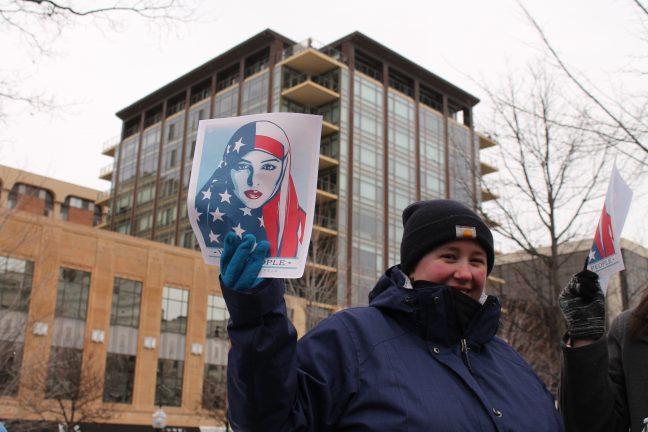I never supported President Donald Trump’s initial ban on all Muslim immigration when he was running for president in March. What I did support was a ban on accepting refugees when the United States could have been far more compassionate in removing dictatorial regimes, like that of Bashar al-Assad’s, out of power. Fast forward to today, and the world is divided over Trump’s executive order to ban refugees from seven countries.
Both sides of the aisle are erupting with either anger or delight over the topic. Protesters have swarmed to airports in defiance of the Trump administration, leading to confrontations with law enforcement.
Social media groups on both sides are fighting it out with political memes, articles, statuses and tweets. Misinformation is being spread everywhere, so I thought I would use this column to explain what the executive order is, and more importantly, what it is not.
First, Trump’s executive order is not a ban on Muslims, but instead a ban on refugees. To say it is a ban on any religion is foolish. Only one of the 10 countries in the world with the most Muslims is on the list. That country is Iran, which has been designated as a state sponsor of terrorism since 1984. The other countries impacted by the executive order are Iraq, Syria, Somalia, Sudan, Libya and Yemen.
While these countries all have populations that are mostly made up of Muslims, the ban Trump instituted barely impacts 15 percent of the global Muslim population. When compiling numbers from a April 2015 Pew Research Center report, I found the executive order would not affect 87 percent of all Muslims.
To say Trump’s plan was to ban Muslims is foolish because the overwhelming majority of the Muslim population can still enter the United States. This, unfortunately, has not stopped people on both sides from calling it a “Muslim ban.” Michael Flynn Jr., the son of the national security adviser, even made the error and had to shut down his Twitter account.
The executive order’s true intention, as the president explained, was to protect the United States from terrorists in some of the most dangerous nations of the world. He hasn’t banned Muslims coming from Indonesia, because the degree of instability and violence there is far lower when compared to Syria. It’s also important to remember that after 90 days of the executive order, the block on new visas will end. After 120 days, the State Department will resume the U.S. Refugee Admissions Program.
One of the arguments I’ve been seeing against Trump’s executive order is there’s a conflict of interest. Some of the countries the refugee ban won’t impact, including Saudi Arabia and the United Arab Emirates, also have business connections with the Trump Organization. The problem with this argument is the seven nations on the ban aren’t even mentioned in the executive order, which simply refers to the Visa Waiver Program Improvement and Terrorist Travel Prevention Act of 2015.
According to the Department of Homeland Security, the law initially applied to Iran, Iraq, Syria and Sudan. In February 2016, the Obama administration extended the law to Libya, Somalia and Yemen. The purpose of the bill was to restrict access to the Visa Waiver Program. This mean the countries the order applies to were not selected by Trump at random — Obama had already set a precedent. There’s also a precedent for temporarily banning refugees, as former President Barack Obama did in 2011 with Iraq for six months. The ban was put into place following the discovery of Al-Qaeda operatives who entered the country claiming they were refugees. The United States has never truly had an open-borders refugee policy. That would risk national security and be a logistical nightmare.
I won’t deny there are areas where this executive order can be criticized. It is unclear whether the Trump administration gave the authorities who would be involved notification ahead of time to prepare. It had to be clarified more than 24 hours later that the ban did not apply to those with green cards. It looks like amateurs were organizing the details of the ban recklessly. I don’t think it helps that inexperienced Chief Strategist Steve Bannon is now sitting on the National Security Council while the director of national intelligence and the joint chiefs of staff would no longer serve as automatic principals on the committee.
The White House should have taken its time on the matter and looked over all the legal details. Their failure to do so has partly led to a combustion of uncertainty and chaos across the nation. But disrupting airports won’t make the left look good and they probably garnered more hate than love.
This executive order’s purpose is noble. Trump understands the threats the United States faces today from terrorist organizations and Islamic radicalism. The executive order has only put into place a temporary ban while the Trump administration makes changes to the screening process. His interests have always been in protecting the American people, not endangering them.


